Recent US Foodborne Epidemics That'll Make You Cringe
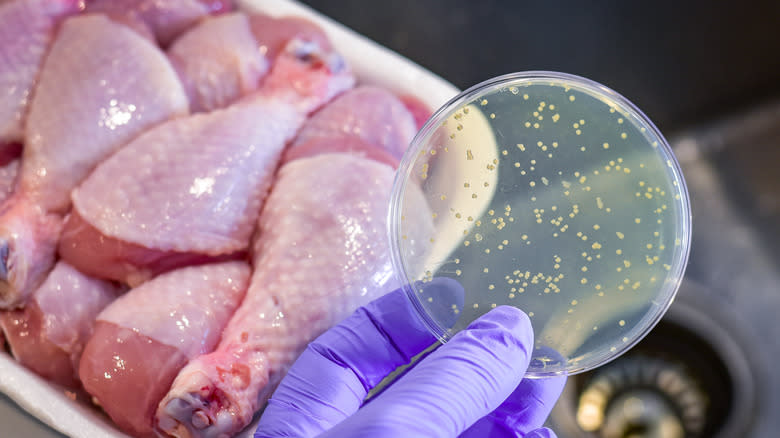
Foodborne epidemics are scary, especially if you find yourself caught up in one. While the affected foods are seemingly random, certain categories seem to get hit more often than others. The result? Some people get sick, while others end up in the hospital or on their deathbeds. The culprits are usually listeria, salmonella, or E. coli. One of the most alarming things we noticed is that several of these epidemics spanned years, with numerous hospitalizations and even deaths before researchers put together enough clues to pinpoint the source.
We used the Centers for Disease Control and Prevention's (CDC) list of multi-state outbreak notices to identify the most cringeworthy foodborne epidemics of the past few years. Once you read about them, you're likely to think twice about eating some of the foods that have been the source of these outbreaks. Hopefully, you'll at least do a better job washing or cooking these foods. At a minimum, you'll want to keep your eyes open for recalls, especially if you're in an at-risk category based on age, pregnancy, or the state of your immune system.
Read more: The Healthiest Fast Food Chains In The U.S.
2016 To 2020: Korean Enoki Mushrooms

Mushrooms have been involved in food illness outbreaks three times since 2020, with two of the cases involving enoki mushrooms. One of the biggest mistakes you can make with mushrooms is not cooking them long enough. A study in Applied Microbiology indicates that mushrooms are safest to eat after cooking them at a temperature of 140 degrees Fahrenheit or more for at least 12 minutes.
The multi-country enoki mushroom food poisoning incident happened between June 2016 and June 2020 and had a heartbreaking outcome. According to the CDC, of the 36 people who ended up sick in 17 states, 86% of them (31) had to be taken to the hospital. Six of the victims were pregnant when the mushrooms made them sick; two lost fetuses. Four of the hospitalized patients died.
The source of the illnesses turned out to be imported enoki mushrooms from Korea that were sold under a variety of company labels. The enoki mushrooms in this incident carried the Listeria monocytogenes bacteria. While Sun Hong Foods, Guan's Mushroom Co., and Green Co. enokis were recalled, Green Co. enokis were most likely responsible for the outbreak, the CDC found.
2020: Fresh Express Bagged Salad Mixes
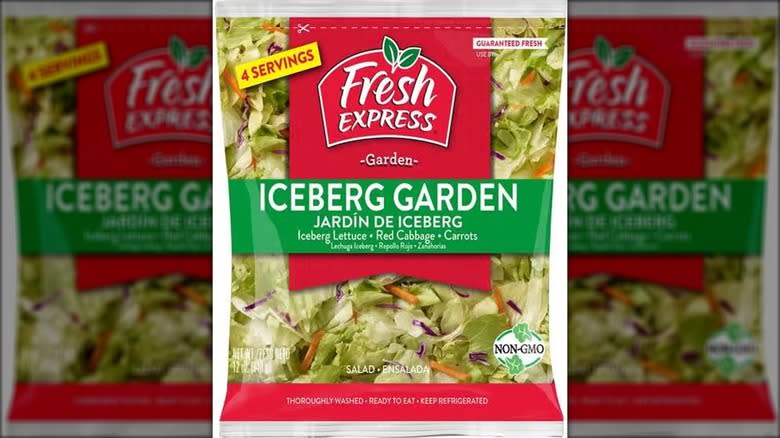
The summer of 2020 wasn't a good time to get a Fresh Express bagged salad mix. Unfortunately, 2020 wasn't the first and wouldn't be the last time that Fresh Express has had food-pathogen-related recalls.
During the 2020 debacle, the CDC says there were 701 confirmed cases of people getting sick from eating bagged salad mixes between May 11 and July 24. Those affected lived in 14 different states. Only about 5% of them (38) ended up hospitalized, so it wasn't as bad as some foodborne illness outbreaks.
The pathogen that infected the bagged salad mixes in this case was Cyclospora, which is a parasite rather than a bacteria. Epidemiologists determined that the likely source of the illnesses was Fresh Express bagged salad mixes. This particular mixture immediately went on a recall list. Interestingly, there was a previous Fresh Express salad mix recall in 2017 after someone found a dead bat in one of the packages, another one in 2020 related to E. coli, and ones in both 2021 and 2023 related to Listeria contamination. Draw your own conclusions.
2020: California Leafy Greens
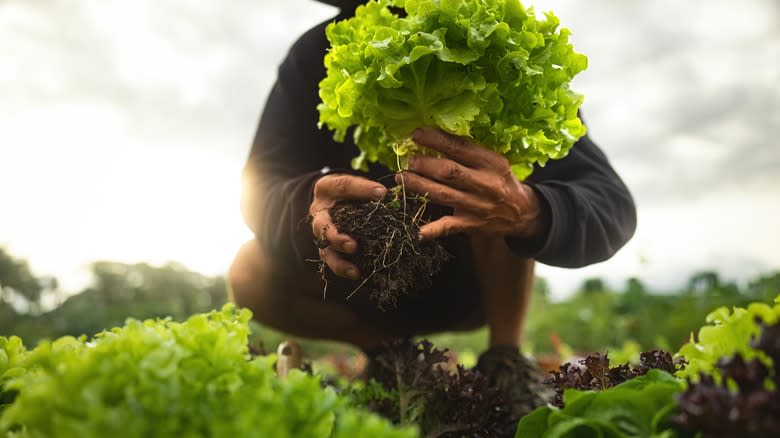
There have been enough pathogen outbreaks involving leafy greens and salad mixes in the last few years to make salads a little less appealing than they once were. We counted eight on the CDC's foodborne pathogen outbreak list between 2020 and January 2024.
The worst leafy green food poisoning incident in 2020 happened between June 6 and October 25. The CDC indicates that the outbreak spanned 12 states, with most of the illnesses happening in California. Of the 32 people who reported getting sick from the leafy greens, nearly 47% (15 people) ended up in the hospital. One person developed a condition that causes kidney failure, and another one died.
The culprit for this outbreak was E. coli 0157:H7, which the U.S. Food and Drug Administration (FDA) linked to leafy greens from the California Central Coast. The contamination seemed to come from runoff from the feces of cattle grazing in fields near a produce farm. The USDA identified cattle as likely being a culprit in continual E. coli outbreaks in leafy greens from this area every fall since 2017. The FDA has enacted an action plan for leafy greens to try to prevent repeats of this contamination. The only product recall related to this outbreak was for Tanimura & Antle brand romaine lettuce.
2020: Thomson International Onions
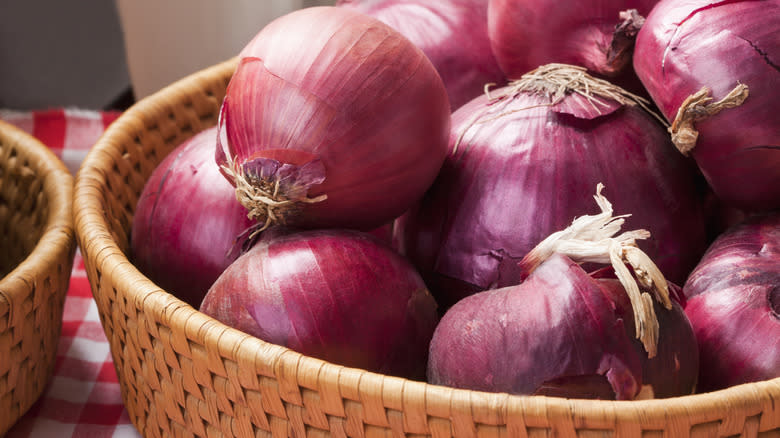
Onions have been the source of foodborne epidemics twice between 2020 and January 2024. Both were responsible for over a thousand illnesses each. Luckily, neither of the outbreaks led to any deaths. However, many of us are still thinking twice about eating raw onions these days.
The CDC reported a total of 1,127 people in 48 states falling ill after eating onions between June 19 and September 11, 2020. Luckily, as these things go, only about 15% (167) ended up in the hospital, and nobody died. The Government of Canada reported an additional 515 cases in seven provinces. Like in the U.S., 15% (79) ended up in the hospital, and nobody died.
The pathogen responsible for the 2020 onion illness outbreak was Salmonella Newport, which seemed to have infected onions from Thomson International Inc. The company ended up recalling all of its red, yellow, and white onions, which it had shipped to grocery stores and restaurants. The recall also included a variety of prepared foods like salads and dips that had used the tainted onions.
2020: Prima Wawona Peaches
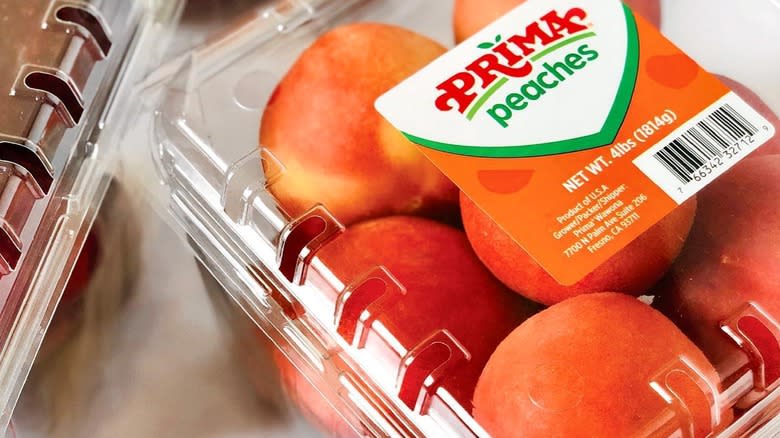
Peaches were to blame for a food illness outbreak in 2020. In fact, peaches have been a disease vector twice since 2020. Even if you peel your peaches, you can infect the inner flesh with your knife after it cuts through the infected outer skin. The CDC suggests washing both your hands and your fruit every time to cut down the risks of contamination.
The CDC reports at least 101 people in 17 states getting sick from peaches between June 29 and August 27, 2020. Nearly 28% (28) of those who got sick ended up in the hospital. Luckily, nobody died.
The people who got sick from eating contaminated peaches during that time had consumed the Salmonella Enteritidis bacteria. According to grocery store records, the common denominator seemed to be that most stores selling bad peaches stocked Wawona Packing Company peaches. Thus, there was a nationwide recall of that brand.
2020-2021: El Abuelito Cheese Queso Fresco

You want to think you're safe when eating cheese, but queso fresco became a pathogen vector that infected several people in 2021. Soft cheeses like queso fresco tend to harbor Listeria. While it's always a good idea to buy soft cheeses made with pasteurized milk, it didn't help in this case since the offending cheese was pasteurized.
The CDC lists sicknesses among 13 people who ate El Abuelito Cheese's queso fresco in four states between October 20, 2020, and March 17, 2021. The outbreak occurred in Maryland, New York, Virginia, and Connecticut. Only one person escaped hospitalization, bringing the hospitalization rate to a little over 92%. Among those who fell ill, one tragically died.
El Abuelito Cheese recalled its queso fresco since it was found to be infected with Listeria monocytogenes. The recall extended to other cheeses from its facility like its Oaxacan string cheese product (Quesillo) and ricotta cheese products (Requeson) as well.
2021: Tyson Foods Fully Cooked Chicken
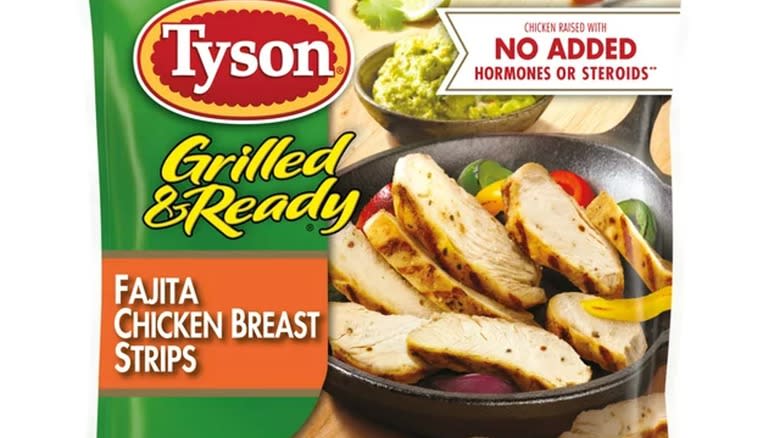
The Tyson Foods food poisoning outbreak didn't sicken as many people as some of the other incidents did. However, we think it's significant because it involved fully cooked chicken rather than raw food. Plus, it sparked a huge recall.
Statistically speaking, it was the worst outbreak on our list. Of the three people in Texas and Delaware who got sick from eating fully cooked Tyson chicken, the CDC reported that all of them ended up in the hospital, and one died. Yes, it was only three cases, but those stats could have been disastrous if they had been extended on a larger scale.
The chicken was contaminated with Listeria monocytogenes and was consumed between April 6 and June 5, 2021. Out of an abundance of caution, Tyson recalled over 8.9 million pounds of pre-cooked chicken products under various brands including those for two convenience stores and two pizza places. Plus, some of the products had gone out to schools, hospitals, and restaurants. Tyson recalled everything from chicken strips and wings to chicken pizza, chicken sandwiches, and chicken salads.
2020: Italian-Style Deli Meats

When most people think about Listeria, they think about it infecting deli meats and soft cheeses. Four of the multistate outbreaks that the CDC has listed since 2020 include deli and charcuterie meats. However, only half of the outbreaks have been from Listeria, as was the case in 2021.
There were 12 cases in this outbreak involving people in Florida, Louisiana, Massachusetts, and New York. Of the 12 who fell ill between August 6 and October 30, 2020, the CDC indicated that 100% of them ended up sick enough to be hospitalized, and one died.
All but one of the people who fell ill reported eating Italian-style deli meats that they'd either bought pre-packaged or had sliced at a deli. However, epidemiologists could never find a common source for the Listeria monocytogenes infections. While health officials did find Listeria in samples from three NetCost Market delis, not all of the victims shopped there. The delis closed down to deep clean, with one location having to close down a second time to kill the last of the tenacious bacteria that had thrived and multiplied.
2021: Seafood

Seafood is among the foods most likely to be recalled, with the CDC reporting five such foodborne outbreaks since 2020. Those outbreaks included everything from seafood in general to frozen cooked shrimp and raw oysters.
A significant seafood contamination left 115 people sick in 15 states between May 11 and October 16, 2021. CDC records show that more than 17% (20 of them) ended up hospitalized. Luckily, there were no deaths in this case. Investigators discovered a strain of Salmonella Thompson at Northeast Seafood Products' production facility in Colorado. Coincidentally, most of the people who got sick lived in or had visited Colorado. While some of the seafood had been cooked, other products were in raw sushi form. Since the contamination happened in production, the company recalled 16 seafood products that it believed were most likely to have come in contact with the bacteria found in the facility. These items ranged from salmon and cod to monkfish and haddock.
2021: Mexican Onions
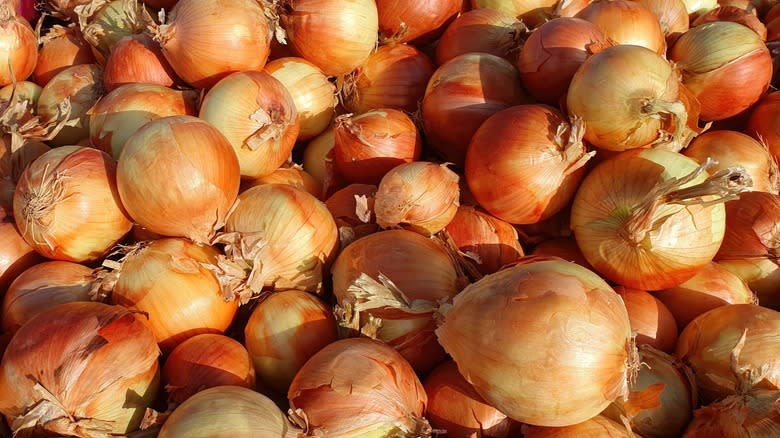
Onions were back on the recall list in 2021. With them involved in outbreaks three times since 2020, some of us are getting more nervous about eating raw onions than we once were.
The CDC recorded 1,040 illnesses related to onions during the 2021 outbreak. While the onion contamination affected fewer people than the 2020 recall and only spread through 39 states, the District of Colombia, and Puerto Rico, a total of 25% (260) found themselves in the hospital. Like with the 2020 round of onion-caused illnesses, nobody died. While there were three cases between June 1 and July 1, 2021, the majority happened between August 1 and October 25, 2021.
All onions infected with Salmonella Oranienburg in this epidemic were Mexican imports sold in grocery stores and made into food in restaurants (especially Mexican restaurants). ProSource Produce and Keeler Family Farms in Chihuahua, Mexico, both recalled their onions as a result of the outbreak.
2014 To 2022: Dole Packaged Salads
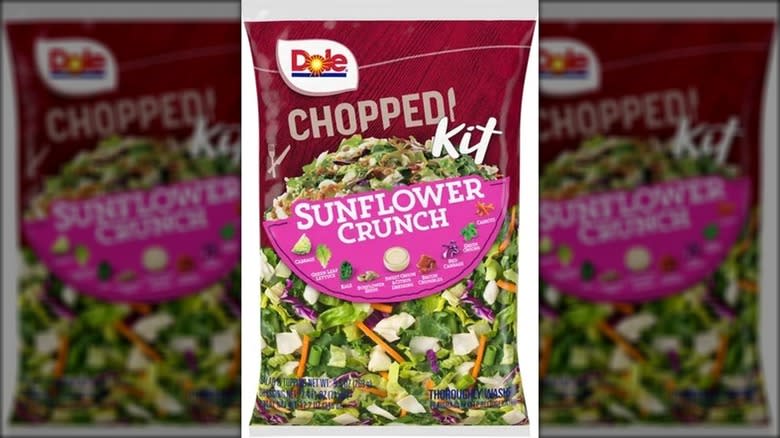
The contamination from Dole packaged salads spanned nine years because the first cases were too infrequent to determine the source. Between August 2014 and January 2022, the CDC confirmed 18 people became sick from eating Dole packaged salads in 13 states, though the agency noted that more people had probably gotten sick that it wasn't aware of. All but one of those cases occurred after September 2018. The results of this outbreak were tragic, with nearly 89% (16) ending up in the hospital and three people dying (nearly 17%).
The CDC says health officials were finally able to pinpoint the source when nine victims remembered eating packaged salads, and two remembered that it had been from the Dole brand. After FDA investigators found traces of Listeria monocytogenes on equipment at Dole in December 2021, Dole recalled packaged salad mixes. A later investigation discovered that the primary source had been Listeria on iceberg-lettuce-harvesting machines, which led to a final recall in January 2022.
2022: Wendy's Romaine Lettuce
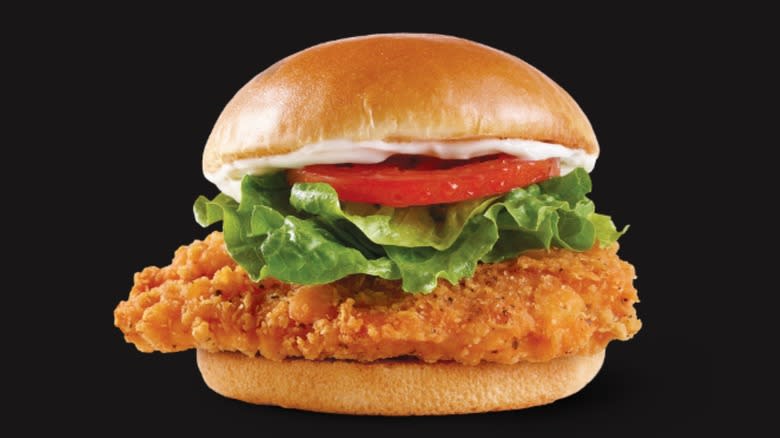
Sometimes, the culprit behind outbreaks isn't cut and dried, which is the case in the spate of illnesses in 2022 that seemed connected to Wendy's. Once the offending ingredients have been consumed, there's not always a lot to go on beyond interviews and shared eating habits.
According to the CDC, the illnesses that seemed related to Wendy's were confirmed in 109 people in six states between July 26 and August 17, 2022. While nearly 48% of them (52) needed to spend time in the hospital and 13 developed a condition that could lead to kidney failure, nobody died.
When local health officials were surveying victims to try to pinpoint what had caused the outbreak, 68 reported eating at Wendy's. A large number reported eating menu items containing romaine lettuce, which is a commonly recalled vegetable. So, epidemiologists' best guess is that the E. coli 157:H7 outbreak may have been related to romaine lettuce served on burgers and sandwiches at Wendy's. While romaine lettuce was never confirmed as the problem, Wendy's eliminated romaine from the menu in the area of the outbreaks.
2021-2022: Big Olaf Creamery Ice Cream

Most people don't worry about getting sick from eating ice cream, but it's a possibility since some pathogens can survive freezing temperatures. While soft-serve ice cream is especially susceptible to making people sick, the ice cream in this epidemic was the scoopable type.
The CDC reports 28 illnesses between January 1, 2021, and August 1, 2022, related to Big Olaf Creamery ice cream. All but one person (over 96%) found themselves in the hospital, and one died in the emergency room. Relatives of the woman who died were later awarded $4 million from their lawsuit against the company. A pregnant woman also lost her fetus to the bacterial illness.
Officials say Listeria can survive freezing conditions. In this case, Listeria monocytogenes showed up in scoopable containers of ice cream from Big Olaf that people had bought from retailers and restaurants. Even a retirement home had an outbreak. As of January 2024, several Big Olaf Creamery ice cream shops have closed.
2021 To 2022: Deli Meats And Cheeses

A rash of sicknesses hit between 2021 and 2022 that health officials finally connected to deli meats and cheeses. They never found the original source, but determining that the outbreaks came from delis helped stop the spread.
In this outbreak, the CDC reported 16 illnesses in six states between April 2021 and September 2022. About 81% (13 people) found themselves hospitalized, one person lost a pregnancy, and one person died.
Clues about the outbreak came to light when 11 interviewed victims remembered eating deli meat and cheese from deli counters in multiple states. While researchers couldn't identify a specific source, they did find Listeria monocytogenes in open packages of deli meat and around one deli. The thought is that the original food source of the outbreak was long gone, but Listeria spread to various meats and cheeses in the delis as well as around the cases, counters, and equipment that needed deep cleaning.
2018-2023: Peaches, Nectarines, And Plums

Three types of drupes -– peaches, nectarines, and plums –- were the source of several illness outbreaks between 2018 and 2023. After six years of people occasionally falling extremely ill after eating one of these fruits, officials seem to have found the source of the problem.
Between August 2018 and August 2023, the CDC reports 11 illnesses in seven states that were related to contaminated peaches, nectarines, and plums. All but one who got sick (nearly 91%) had to go to the hospital for treatment, and one person died.
The peaches, nectarines, and plums were carrying Listeria monocytogenes. The outbreak led to a recall of several fruits from HMC Farms, which also uses the Signature Farms brand name. The FDA was concerned that some fruit may have been removed from its original packaging, so consumers were instructed to look at a list of retailers to make sure they hadn't purchased contaminated fruit.
2023: Cantaloupes
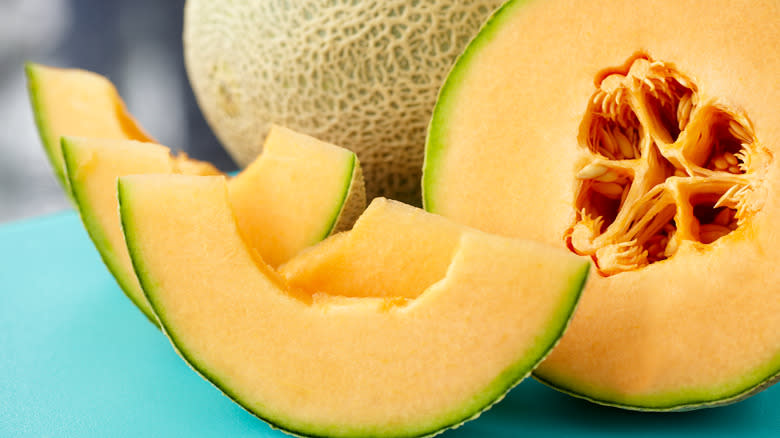
The deadliest outbreak on our list is the most recent one, and it involves cantaloupes sold in the U.S. and Canada. Before the outbreak got under control, the CDC reported 407 people getting sick, 158 people being hospitalized, and six dying. The sicknesses raged on in 44 states between October 15 and December 25, 2023. Canada was also the recipient of tainted cantaloupes, with the Government of Canada reporting 164 illnesses, 61 hospitalizations, and seven deaths. Between the two countries, that's 571 illnesses, 219 hospitalizations, and 13 deaths. Both the Government of Canada and the CDC reported that most of the illnesses happened in those five and younger as well as those 65 and older. Many were served the fruit at childcare centers or long-term care facilities.
The deadly cantaloupes were contaminated with Salmonella Sundsvall and Oranienburg. The FDA was able to trace the infected fruit back to several brands of cantaloupes from several locations, resulting in a sizable recall. Both whole cantaloupes and cut-up fruit sold in plastic containers alone and with other fruit from multiple brands were involved.
Read the original article on Mashed.

